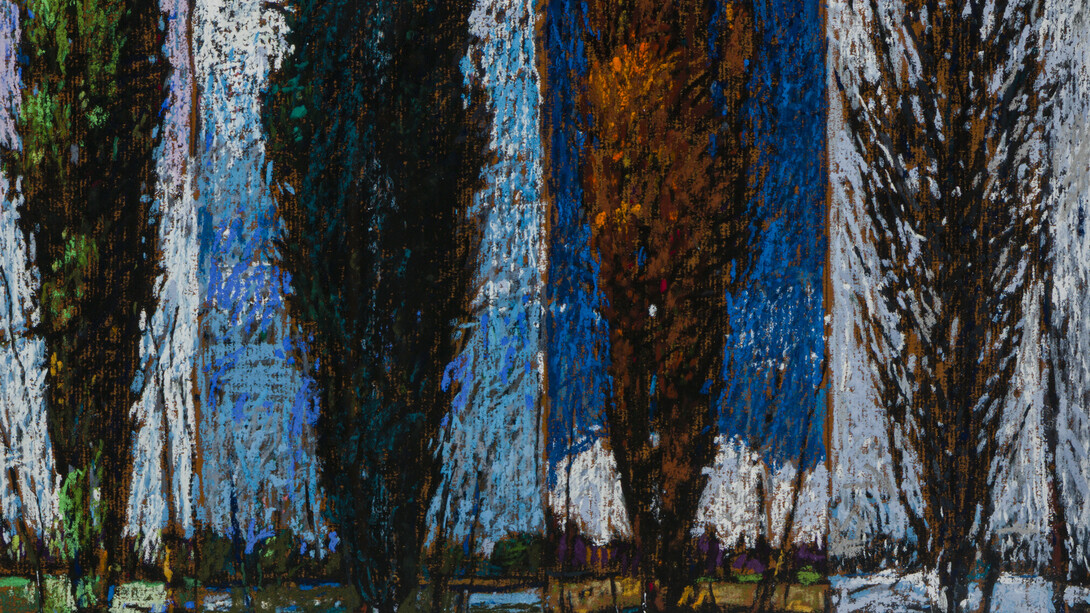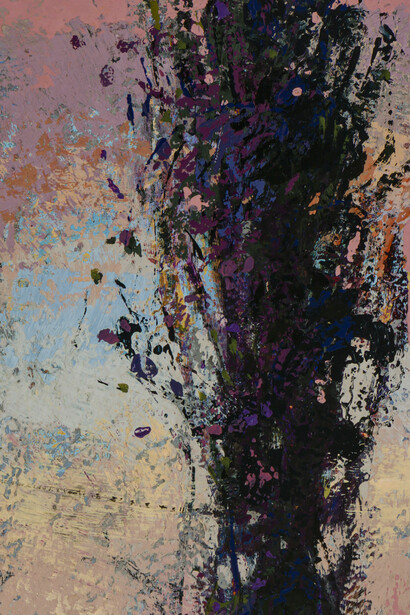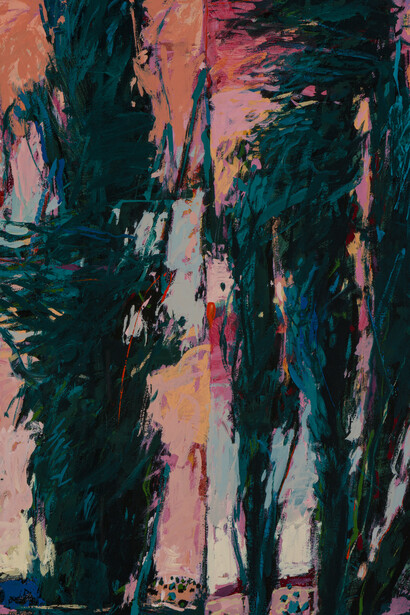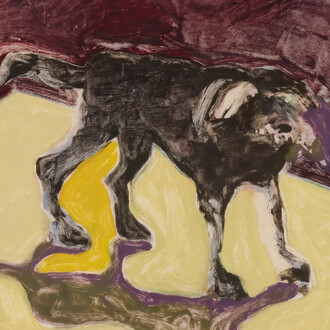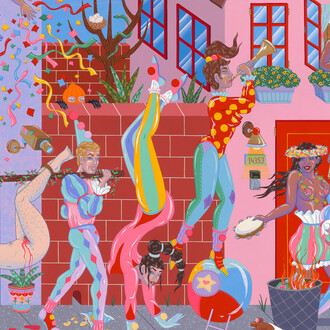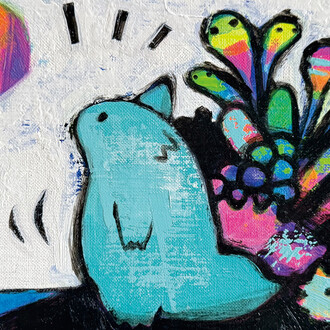LewAllen Galleries is pleased to present In the poplars eternal beauty lives, a solo exhibition of paintings by acclaimed American artist John Fincher (1941–2024), on view from December 5, 2025 through January 3, 2026.
This exhibition celebrates Fincher’s masterful engagement with the natural world and his exploration of the visual and emotional power of the Western landscape. His renowned poplar paintings convey a quiet tension—alive with energy and movement, yet grounded in stillness and reflection. Through rich layers of color and gesture, Fincher translated familiar forms of the American Southwest into meditations on endurance, transformation, and light.
Throughout his career, Fincher remained committed to finding beauty in the elemental. The trees, brush, and cacti that populate his work are not simply representations of nature, but expressions of its inner rhythm. His paintings move fluidly between realism and abstraction, intimacy and monumentality. In them, color becomes both form and emotion; texture becomes time itself.
Born in Hamilton, Texas, in 1941, Fincher was shaped by the land that surrounded him from childhood. After earning his MFA at the University of Oklahoma and teaching at Wichita State University, he made New Mexico his home. The high desert light and vivid palette of the Southwest became central to his practice, informing his lifelong study of the relationship between color, structure, and sensation. From his Santa Fe studio, he developed a language of painting that fused observation with invention, revealing the quiet majesty of the Western terrain.
Fincher once described his subjects as the “trappings of the West”. His “trappings of the West” are reimagined through color and form until they become universal emblems of endurance and change.
In this sense, his paintings are not about the West as place but the West as an ideal, a myth, —a landscape of mind and memory, defined by openness, space, and solitude. His work became known as sophisticated iconography of the Great American Frontier. In his poplar works there also lies a tenderness, a reverence for the fragile beauty of nature. It is here that living things survive and endure. That goes for the people who came here and settled it. That spirit is echoed in Fincher’s poplar paintings: strength, beauty and grandeur. His poplars rise like living columns of color and energy, their vertical forms holding both physical weight and spiritual presence.
Fincher layered oil and pastel into dense, tactile surfaces that oscillate between solidity and translucence. Vivid greens, rusts, deep blues, and pale whites are punctuated by pastel tones and vibrant pop colors that flare across the surface like passing light. These contrasts—cool against warm, recessive against assertive—animate the work with optical tension and emotional charge. The paint itself becomes the subject, thick with gesture and revision, as form dissolves into sensation. Light feels almost tangible, pressing forward through layers of pigment, transforming trees into luminous conduits of color.
At times, Fincher’s compositions narrow to a single vertical form. These solitary poplars radiate a quiet power, standing like sentinels—both human and elemental—embodying solitude, endurance, and the timeless vitality of the land. The backgrounds, textured with scraped and dragged color, echo the late afternoon light of New Mexico, where hue seems to hover in the air.
Fincher’s achievement lies in his reimagining of the Western tradition. Rather than depicting vast horizons, he found grandeur in close focus. His paintings transform familiar forms into meditations on presence and permanence. They reveal that the spirit of the West is not bound to its scale, but to its resilience—the capacity of nature to renew itself. His surfaces, rich and physical, mirror the land’s own complexity: rugged yet luminous, enduring yet fragile.
